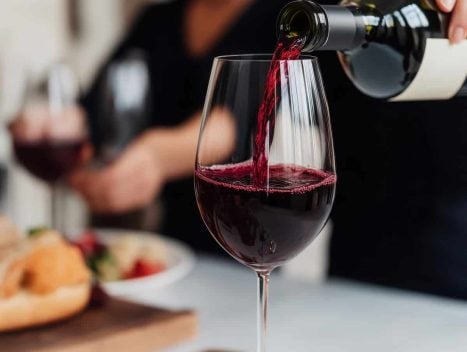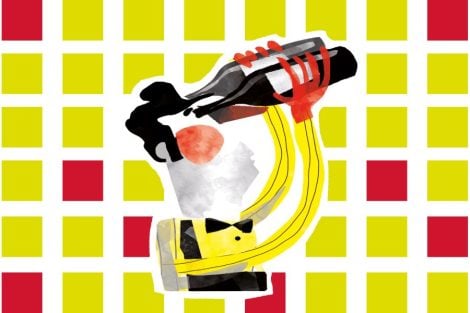Despite all the words spent and the firm beliefs presented as unbreakable rules regarding the kaleidoscopic relationship between food and wine, we are convinced that the topic can hardly be confined within a rigid sequence of norms. The immense variety of taste experiences, the impossibility of precisely replicating recipes (and thus flavours and aromas), as well as the diversity of wine types, means that any attempt to definitively resolve the issue is doomed to fail. In short, reality is, fortunately, much richer and more pleasantly surprising than theory.

Food and wine pairing: the advice of Gambero Rosso
But what are the foundations, the principles that determine the greater or lesser compatibility between food and wine?
Starting with flavour in its qualitative aspects (saltiness, sourness, sweetness, bitterness, plus umami), it would be best if the wine could tone down, soften, and balance the taste tendencies of the food, allowing us to perceive its characteristics without becoming desensitised. This means that food and wine pairings should be based on a contrast between the dominant tendencies of their respective flavours.
For example, sourness and bitterness, which are intensified by saltiness, are softened by sweetness, and vice versa; saltiness is diminished by sweetness and enhanced in the presence of bitterness and sourness. This applies to flavours. But contrast is also effective in balancing certain tactile sensations: for instance, oiliness and fattiness are more pleasant when countered by acidity, effervescence, or a certain tannic grip.
If, when balancing flavours, contrast is the ideal approach, when considering the quantitative aspects of taste, the principle of analogy should prevail. Thus, complex and bold-flavoured dishes should be paired with wines that have similar characteristics. Conversely, if the dish is delicate and light, the wine should have a similar structure.
A special case is that of desserts and sweet treats: in these instances, sweetness cannot be paired by contrast, as the sweet sensation is too dominant. Instead, we proceed by concordance, perhaps accompanying the pairing with something that adds an extra aromatic dimension, as we have explained when discussing the best pairings for Easter Colomba or Panettone.
Moving from theory to practice—or rather, to the table—here are some examples of food and wine pairings, without any claim to be exhaustive, to help you find the combinations that satisfy you the most.
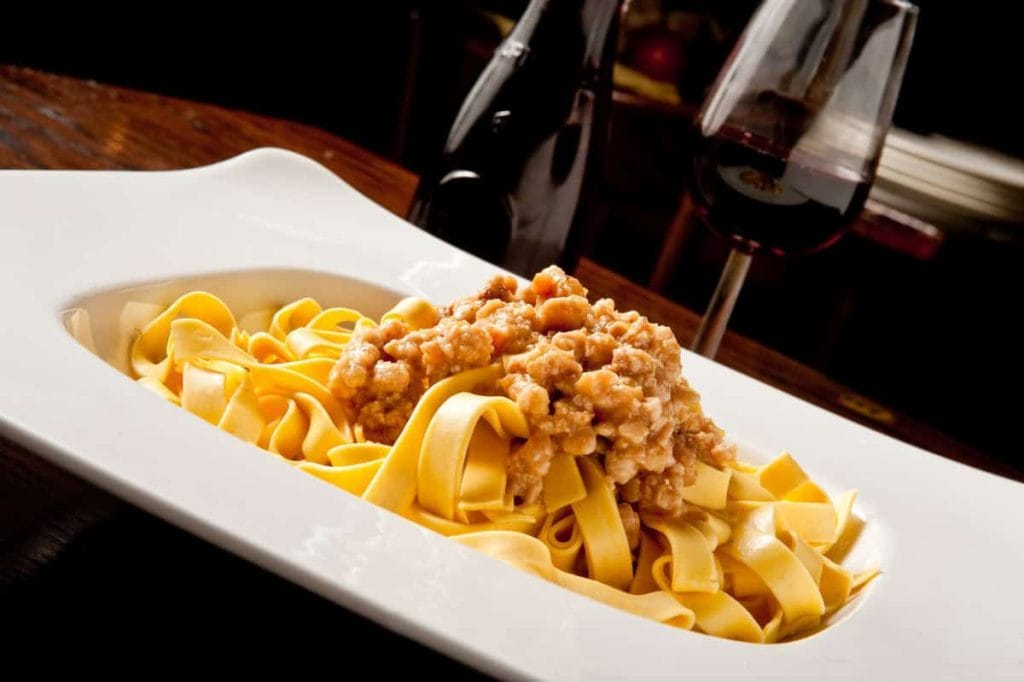
Starters and pasta dishes, from land and sea
In pairing, the focus is more on the sauce than the pasta itself. Let’s look at some examples.
In Emilia-Romagna’s ragù, we find fatty elements (butter), meats, and tomatoes, which contribute acidity. It is generally served with egg pasta, which tends to emphasise the softer and more unctuous components. We need a wine that can counterbalance the excess fat in the sauce with a good dose of tannins. A red wine that is not too full-bodied but has good structure: a Lambrusco Grasparossa could work well, as could a Sangiovese di Romagna, a Grignolino, or a Cirò Rosso.
If we shift the sauce to a seafood base, the colour of the wine generally changes. We will need a white wine. Which one? That depends on the sauce, as seafood-based pasta dishes are not all the same. For spaghetti with clams, a light and acidic white wine (Verdicchio di Matelica, Falanghina, Gavi) works well; for tagliatelle with lobster, something with more body and aroma, such as a Friulian Chardonnay, a Lugana, or a Greco di Tufo.
For vegetable-based sauces, we must ensure that the wine does not have bitter nuances that would be intensified by the pairing. Take an extreme example, orecchiette with turnip greens: they should be served with a fairly soft white wine—perhaps a Pinot Grigio, an Umbrian Grechetto, or a Timorasso. Alternatively, a rosé made from Primitivo grapes could also work well.
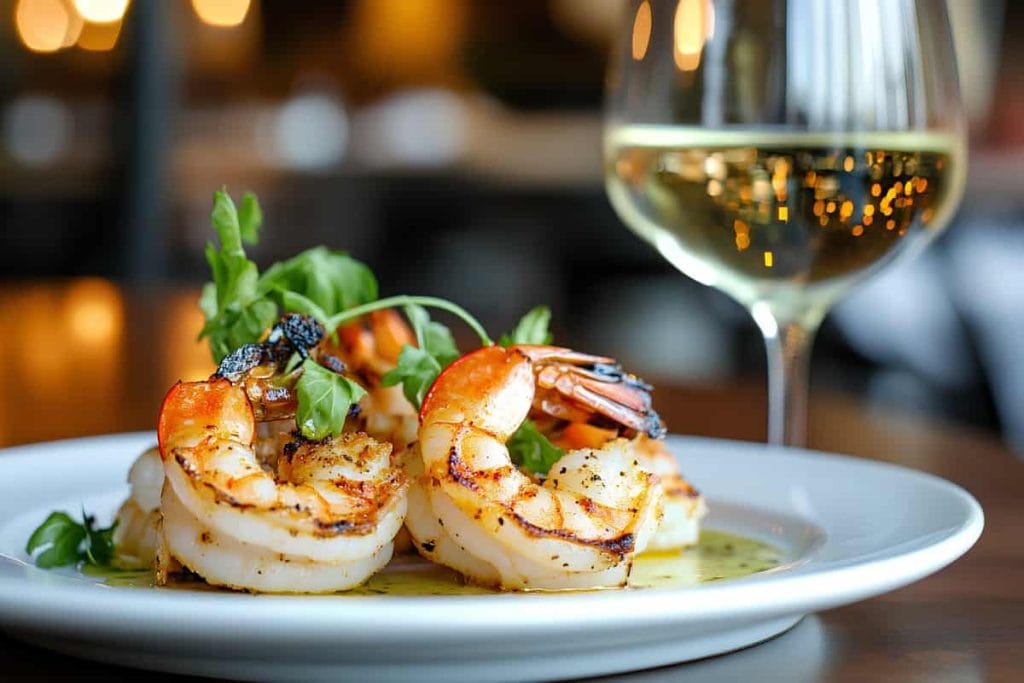
Fish and shellfish (even with red wines)
If we consider how different a delicate raw langoustine is from the savoury taste of baked sardines, or how the almost ethereal flavour of a lightly grilled squid contrasts with the robust, intense taste of a fish soup, along with the impact of cooking methods, cooking times, and accompanying ingredients or seasonings, it becomes clear how vast the range of possible wine pairings truly is. In short, claiming that fish should (only) be paired with white wine is nonsense.
For delicate, white-fleshed fish, whether raw or briefly cooked and not excessively fatty (such as steamed sea bass or raw or lightly blanched shellfish), the primary ingredient should be highlighted. Therefore, we should choose white wines that are not overly acidic (such as Vermentino from Sardinia, Ribolla Gialla, or Pigato).
For fried seafood, we need to enhance the cleansing effect, so we should emphasise the wine’sacidity:VerdicchiodeiCastelli di Jesi, Fiano di Avellino, but also sparkling wines, such as young and lightly dosed Trentodoc or Franciacorta.
With oven-baked fish and oily fish (sardines, anchovies, and mackerel), the taste complexity increases, often with added fats in cooking; the wine should match this. At this point, we could even consider reds, provided they are not too tannic, as tannins do not pair well with the saltiness of fish. Options include Schiava from Lago di Caldaro, Verduno Pelaverga, Soave Classico, Fiano di Avellino, and Vernaccia di San Gimignano.
When it comes to fish soups and stews, our pairing guide leans towards red wines—both because tomatoes are often used in these recipes and because these dishes can handle red wines. The longer the cooking time, the more structure we need in the wine: we could start with the previously mentioned Pelaverga and Schiava, move on to young and agile Chianti Classico, consider Valpolicella, and even venture towards Campanian Piedirosso, finishing with a Dolceacqua or, why not, a young Barbera.
Oysters and Champagne? No, thank you! Considered very chic, in reality, pairing oysters with Champagne is a true gastronomic crime—a direct assault on good taste. Oysters tend to have a briny, savoury, and slightly bitter flavour, two characteristics that make them completely unsuitable for pairing with Champagne, which thrives on acidity. The combination immediately creates an unpleasant metallic and bitter sensation. Instead, try them with a good Moscato—you won’t regret it! The same applies to caviar, whose classic pairing, almost a "territorial" one, is with vodka.
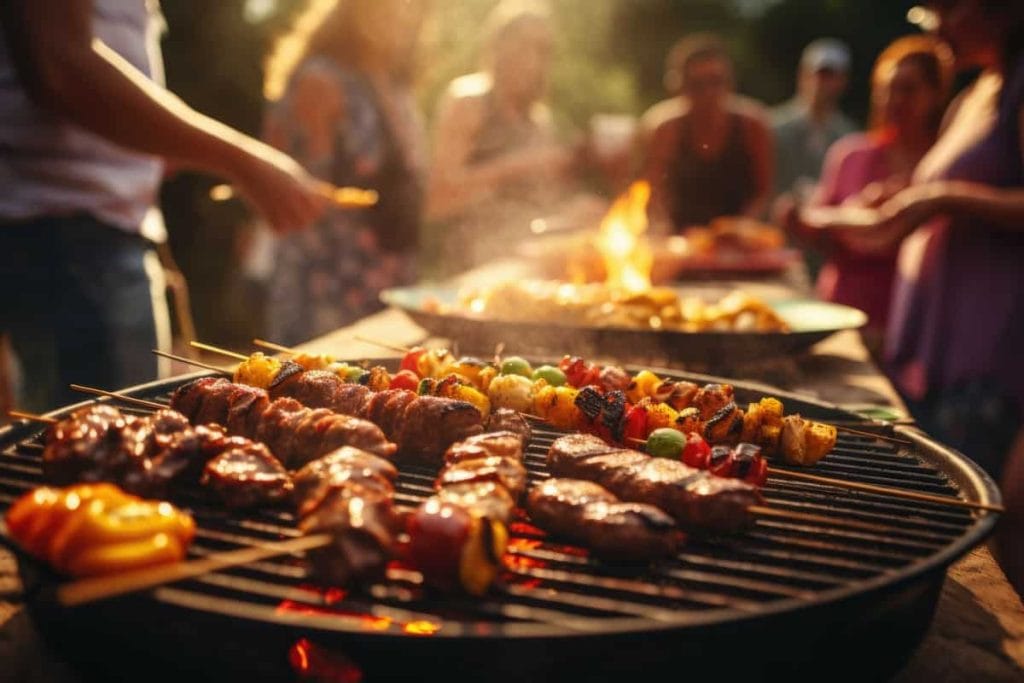
Meat: from light poultry to robust stews
Just as we have seen with fish, the phrase "red wine with meat" should not be taken as an absolute rule.
We begin with simple cooking techniques—direct heat, without the addition of too many ingredients— grilling, to be precise. If the meat is red, there is no need to look for aged or overly complex wines. It is better to opt for reds with moderate tannins and a nimble structure: this is the perfect profile for Chianti Classico, but also for Rosso di Montalcino, Grignolino, and Pinot Noir from Oltrepò Pavese.
If lamb is also on the grill, then Cabernet works brilliantly too, preferably one from Bolgheri or Colli Euganei.
With boiled meat, we need wines with lower tannins and higher alcohol content: Dolcetto d'Alba and Dogliani, Piedmontese Barberas, and Valpolicella Classico Superiore all fit the bill.
White meats are often better suited to pan or oven preparations—think of roast chicken, rabbit stew, or white veal stew. Here, we can choose very light, low-tannin red wines, but also whites with good mineral structure and juicy acidity: Etna Bianco, Fiano di Avellino, or Greco di Tufo, moderately aged Verdicchio dei Castelli di Jesi, Collio whites, and Soave Classico.
When it comes to slow-cooked red meats—braised dishes, game, and stews—only aged reds can play the game. Barolo and Barbaresco, Brunello di Montalcino, Amarone, Montepulciano d'Abruzzo, Campanian Aglianico, and Sagrantino di Montefalco are the best choices. These are wines with structure and tannic complexity that time has softened and harmonised.
And what about offal? By now, we are all familiar with offal, given its recent success both in restaurants and on our own tables. Offal includes everything related to the animal’s innards: lamb’s pluck, tripe, kidneys, liver, and heart. These ingredients are characterised—some more, some less—by a bitter component that must be carefully considered. Their relationship with tannins, even when mild, is problematic.
Therefore, we turn to aged white wines, perhaps slightly soft yet full-bodied: Vernaccia di San Gimignano, Greco di Tufo, Gewürztraminer, and Malvasia from Carso. And we shouldn’t be afraid to go as far as sweet wines—an excellent Orvieto Muffato, a Recioto di Soave, or a Passito di Pantelleria could bring delightful surprises.
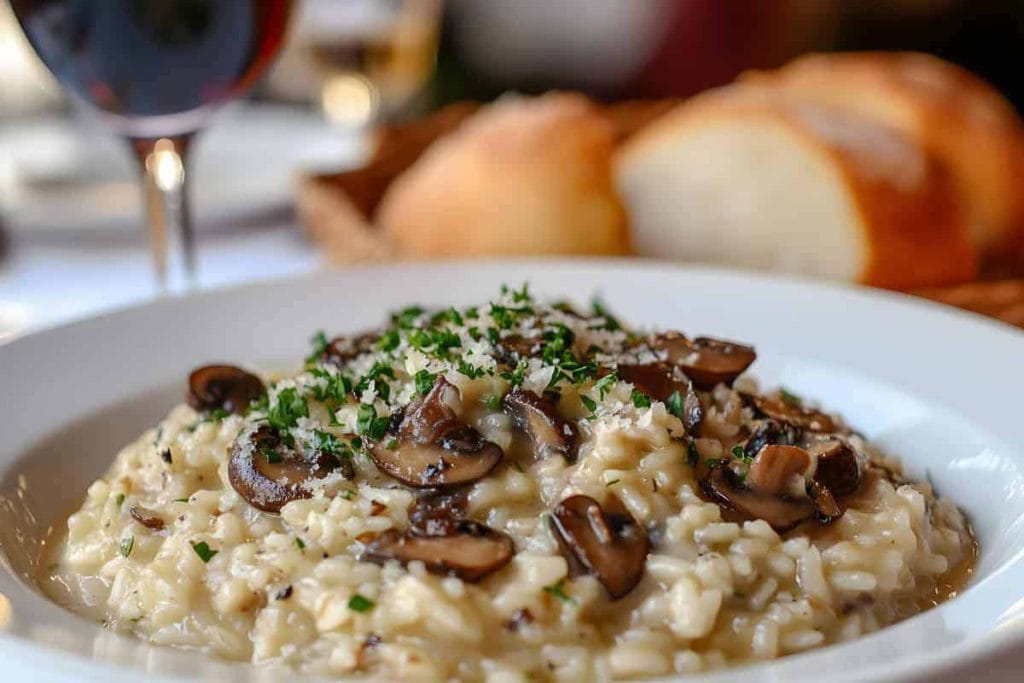
Mushrooms, truffles, and vegetables: a difficult but not impossible pairing
Things get more complicated here. Let’s start with mushrooms, which generally have a delicate flavour and rely more on their aroma than on a distinct taste. These ingredients do not pair well with acidity or tannins. They work best with soft white wines, such as Grechetto from Lazio and Umbria, Malvasia from Friuli, and Chardonnay from the Langhe.
Truffles are even more extreme in their nature: they are a pure concentration of aroma but are neither sour, bitter, salty, nor sweet. Some foods manage to enhance their already intense aromatic characteristics.
In the case of white truffles, which must be eaten raw, eggs and certain cheeses (think of melted butter on tagliatelle) are among the best pairings. Finding a perfect wine match is not easy, but in our opinion, the best choice is a well-aged Riesling (not necessarily Italian).
Black truffles are easier to pair, as they are almost always used in cooking and integrate more with the flavours of the dishes they are added to. For pasta dishes with black truffle, we recommend medium-bodied red wines such as a Venetian Merlot, various expressions of Italian Sangiovese, Barbera, or Pinot Noir.
When truffle is used to enrich meat dishes, whether roasted or pan-fried, we should opt for wines with more tannic structure: Roero, Barbaresco, or Brunello di Montalcino. If it is game meat, we need even more structure— Taurasi or Sagrantino would be excellent choices.
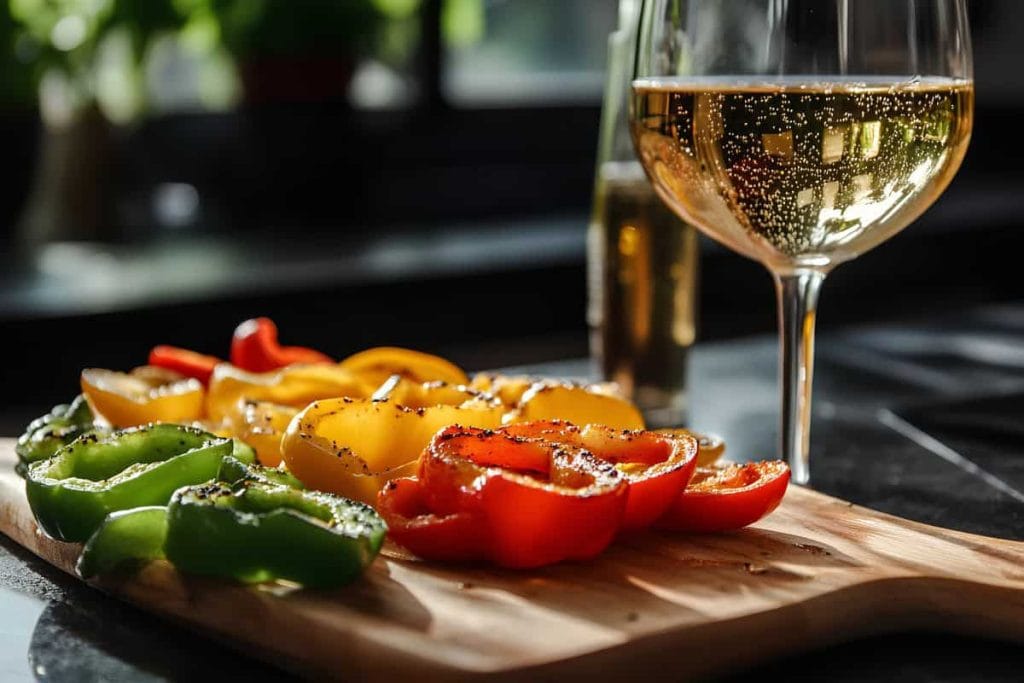
Pairing wine with vegetables and greens is a tricky subject that poses several challenges. Successful pairings are rare. However, Valpolicella and Chianti work well with legume-based soups; Piedirosso is the key to pairing with aubergine parmigiana; even a complex ingredient like artichoke (cooked—raw is too difficult) can find a good match in Frascati or certain Sauvignon Blancs. The same goes for asparagus, which pairs well with the herbaceous notes of Friulano.
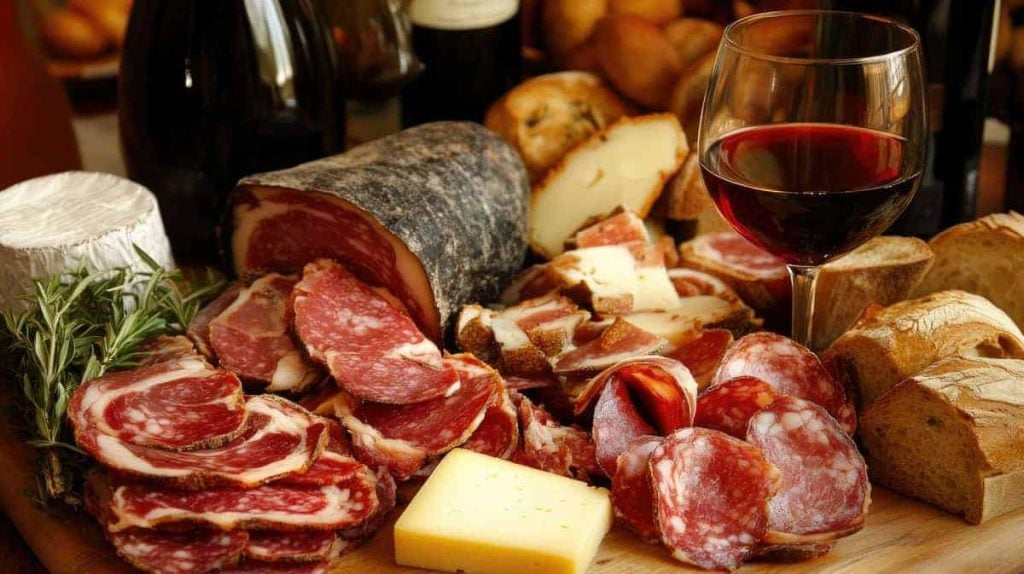
Cured meats: watch out for the salt!
Prosciutto, speck, culatello, spicy salami, aged salami, cooked salami, mortadella, lonza, capocollo... The list of Italian cured meats could go on endlessly. What we must recognise is that there is a common thread linking these products: a natural sweetness from the fat, which is closely tied to the saltiness from the curing process.
When the sweetness of the fat dominates without excessive saltiness (as in lard-cured salami, cooked salami, cotechino, or zampone), the best choice follows regional traditions—generally young, sparkling, or semi-sparkling red wines that help cleanse the palate: Lambrusco, Bonarda, Barbera, and Gragnano.
For spicy salami (such as Calabrian sausage and heavily peppered salami), we should avoid wines with high astringency. Instead, opt for Primitivo, Cannonau, Aleatico, Ruché, or Ciliegiolo.
Contrary to popular belief, pairing wine with heavily salted aged curedmeats —particularly prosciutto—is extremely difficult. Salt presents a major challenge for wine, as it enhances its metallic notes, disrupting the overall flavour balance. In these cases, we can turn to the delicate Schiava from Alto Adige, Cerasuolo d'Abruzzo, or a young Morellino di Scansano. It is best to avoid highly acidic white wines or aged reds.
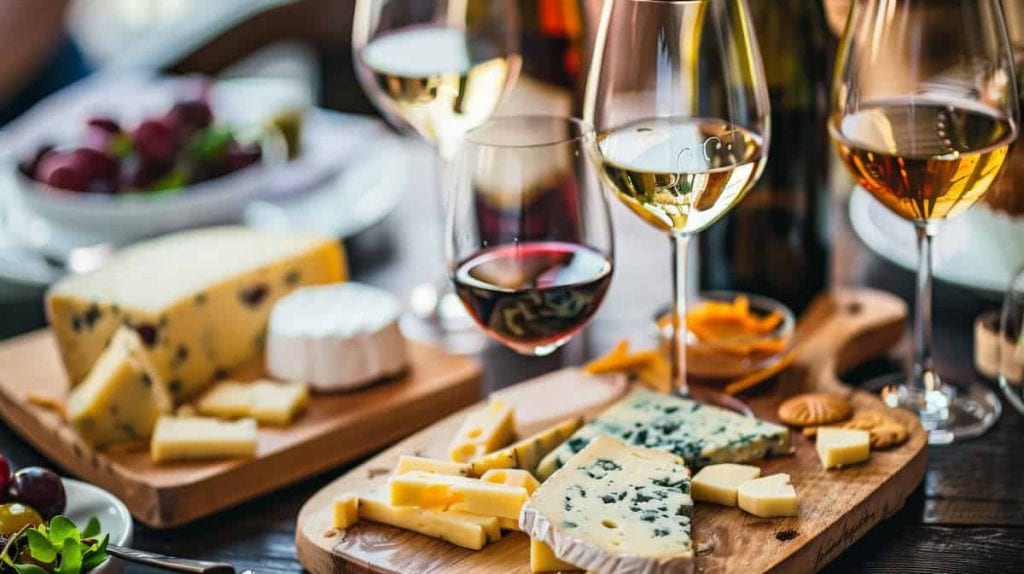
Cheeses: from Parmigiano Reggiano to Robiola
Just like with fish and meat, when pairing wine with cheese, it’s important to first understand which type of cheese you are dealing with. The structure, aggressiveness, and concentration of its flavour should not overpower those of the wine. For example, very mature Parmigiano Reggiano should be paired with a structured red wine, which also has appropriate ageing. A fresh and delicate cheese, like stracchino or fiordilatte, will go well with light and aromatic wines.
Besides the structure, consideration should also be given to the fatty elements, which add sweetness, the salty ones, or the spicy ones. In this case, the wine will serve to harmonize these sensations, so we’ll aim to find the right contrast. The fattiness will be balanced by the acidity of whites or the tannin of reds; the saltiness of the cheese will require softness; and the spiciness, which comes from the fermentation processes of the cheese, but also from potential moulds or blue veins, will pair well with alcoholic wines and, why not, with sweet wines.
The creaminess of a robiola or crescenza should be paired with whites that have a fresh acidic streak; just as a taleggio or Castelmagno should be paired respectively with an Amarone or a Sangiovese (from Tuscany or Romagna) that isn’t too aged.
In this article on the best wine-cheese pairings, you’ll find a selection of labels to try.
We close this mini-guide to food-wine pairing by reaffirming what we believe is the most important concept to keep in mind: let yourself be guided by curiosity and the desire to experiment. The exciting pairing may be just around the corner.

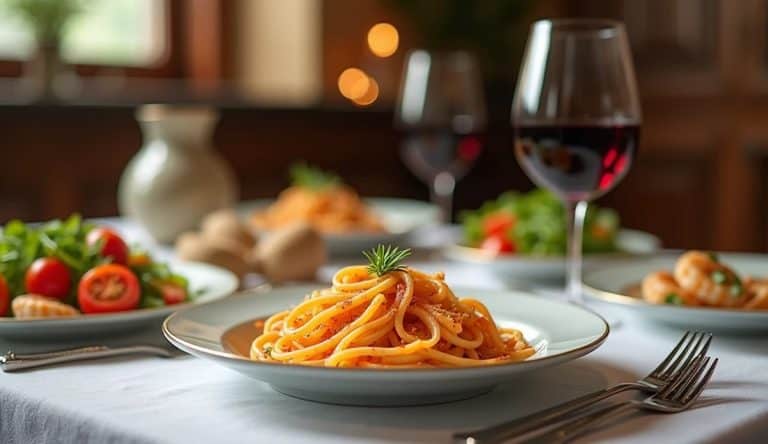
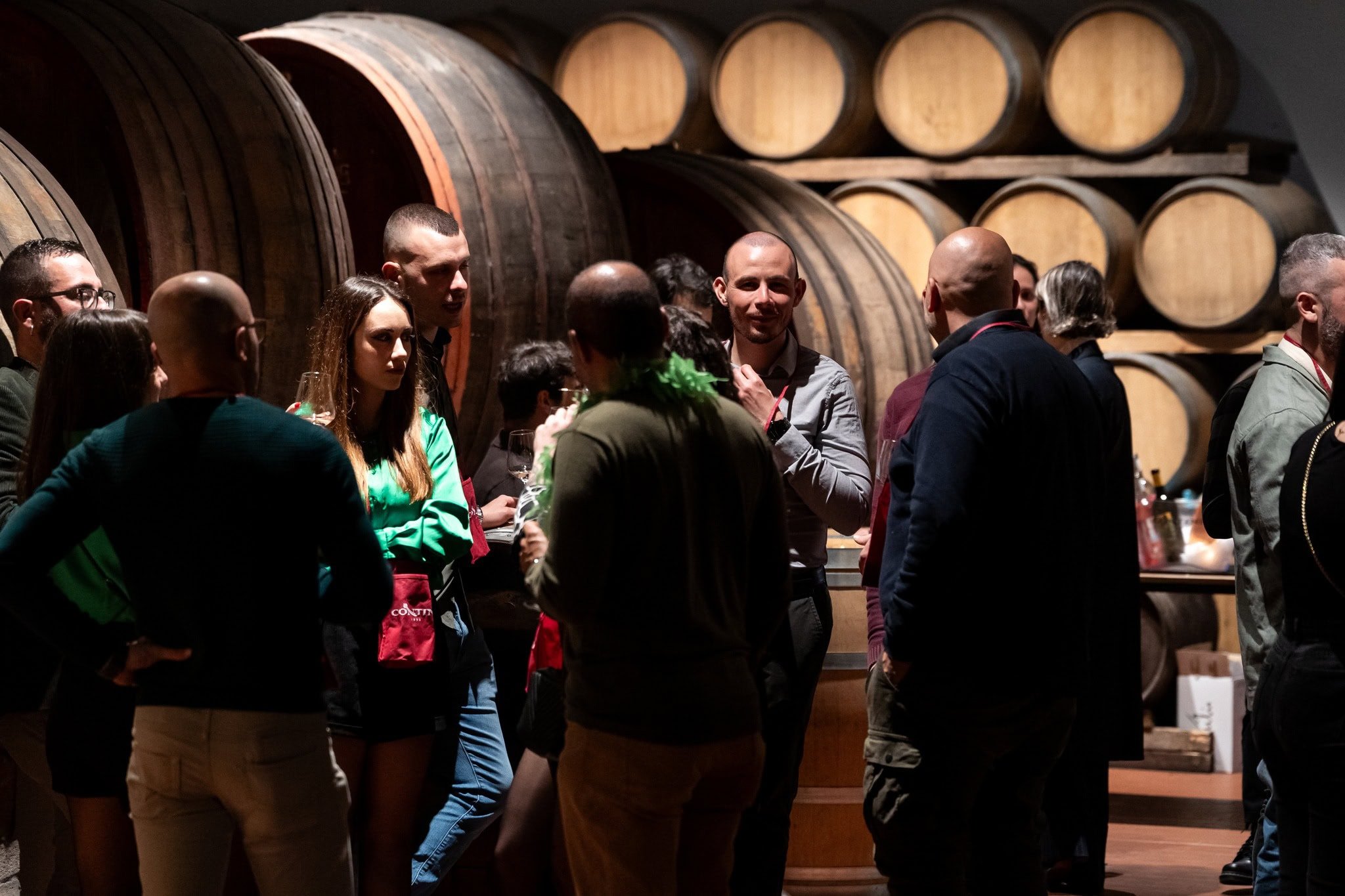 Here are ten Rare Wines you absolutely must try
Here are ten Rare Wines you absolutely must try The “Tariff Vinitaly” closes with 97,000 attendees: one third from abroad. See you on 12 April 2026
The “Tariff Vinitaly” closes with 97,000 attendees: one third from abroad. See you on 12 April 2026 Trump “freezes” tariffs for 90 days. UIV: “Now work towards zero tariffs on wine too”
Trump “freezes” tariffs for 90 days. UIV: “Now work towards zero tariffs on wine too” Dealcoholised wines, everyone halt: production in Italy is blocked until 2026
Dealcoholised wines, everyone halt: production in Italy is blocked until 2026 Arianna Occhipinti surprises everyone and returns to Verona: "There are too many natural wine fairs, and they’re too scattered"
Arianna Occhipinti surprises everyone and returns to Verona: "There are too many natural wine fairs, and they’re too scattered"